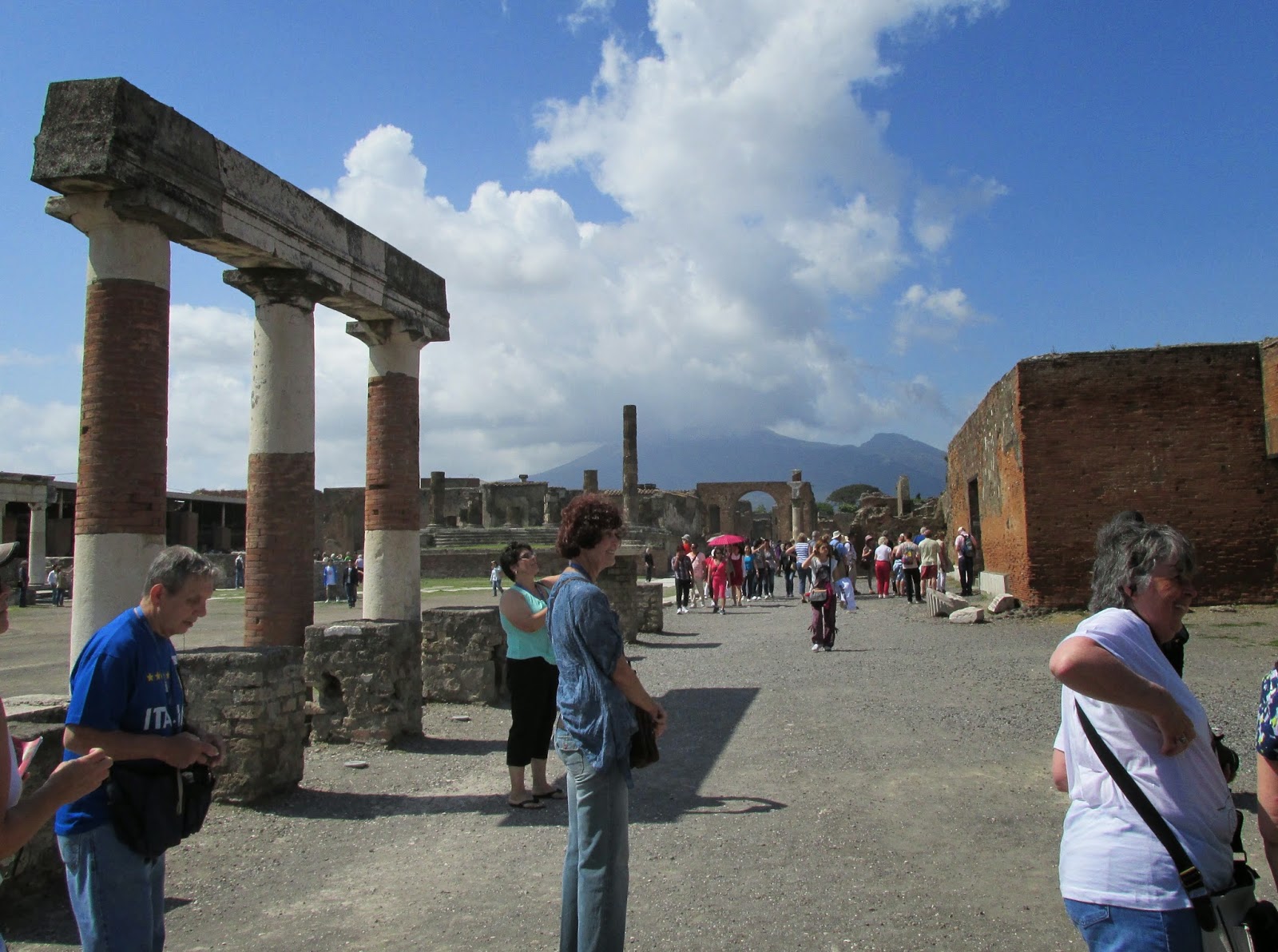We got the little talk that I’m sure every tour group gets
about the Holy Door, which is to the right of the main door leading from the
portico into the church. (The portico, or front porch, has a beautiful, high,
arched ceiling, and from here you can look out and see St. Peter’s Square
spread before you, just as the Pope no doubt does before he walks down the
steps for this, that or the other ceremony/occasion.) Anyway, the Holy Door is kept sealed except
for Jubilee years -- usually every 25 years -- when there’s an elaborate opening
by the Pope. Formerly masons would
loosen the sealant, so that the Pope could just tap the door with a silver
hammer for it to open. But after some loose
masonry fell on Pope Paul VI, they made a point of getting rid of all the
sealant, so that the Pope would be able to just push on the door with his
hands, without a shower of concrete falling on his head.
They’re not even sure how this tradition originated, but
like most traditions, it’s taken on a life of its own.
 Inside, after giving us a brief moment to gasp at how huge
and splendid the church was, we were led by to the right, where Michelangelo’s
famous Pieta can be viewed behind the
glass wall that was installed after some deranged geologist (!) took a
geologist’s hammer to it, while declaring “I am Jesus Christ!" It is, indeed, a beautiful sculpture, just as
the artist’s David is. No question, the guy was good. But it is frustrating to be kept at such a
distance, so different from the up-close-and-personal view you are able to have
of David. You simply are not able to see
the fine detail.
Inside, after giving us a brief moment to gasp at how huge
and splendid the church was, we were led by to the right, where Michelangelo’s
famous Pieta can be viewed behind the
glass wall that was installed after some deranged geologist (!) took a
geologist’s hammer to it, while declaring “I am Jesus Christ!" It is, indeed, a beautiful sculpture, just as
the artist’s David is. No question, the guy was good. But it is frustrating to be kept at such a
distance, so different from the up-close-and-personal view you are able to have
of David. You simply are not able to see
the fine detail.Then we were led around by our guide to look at this statue and that picture (and, interestingly, none of the pictures you see in the church are paintings, but rather mosaics, that look like paintings), and eventually I did my usual wandering off on my own. You’re drawn ineluctably toward the colossal dark bronze canopy that looms over the main alter, directly under the dome. In a way, the canopy doesn’t seem to go with the rest of the décor, which is heavy on the white marble, the gold, the classical paintings (i.e. mosaics), the colored marble on the floor, in the niches that contain all those statues. To me the canopy looks positively oriental, like a Chinese pagoda.

Like the inner domes of the Duomo in Florence, and the one in Siena, this one is beautiful, with panels of painted saints and other religious folk curving up the dome, separated by narrow stripes of gold stars against a dark blue background. I’d learned by this time that the “stars of heaven” are a favorite theme of church ceilings. And of course, as always, there’s the cupola at the top of the dome, with a hole giving you a view into “heaven” beyond.
Here again, as at the basilica in Siena, I got separated
from the group, discovered all of a sudden that I could not hear the guide over
my headset. Minor panic set in, as it had
in Siena, because I didn’t know where the group was going next, and with the crowds of people, and amount of space to
be covered in any search…how was I to find them? And then, suddenly, there was ever-dependable
Gianni, waving his hand at me. Where would I have been without Gianni!
When we went outside, we found that the area directly in
front of the basilica was full of chairs, for some event. We had to follow a narrow, roped-off path
around the center area. And of course,
we were led directly by our guide to the inevitable gift shop, where people got
busy buying souvenirs and Vatican guide books.
And alas, wouldn’t you know that in the one picture I took
of the exterior of the church, the dome is hidden by an outdoor lighting
fixture!
But there is no question: the Vatican is not to be missed on
a trip to Rome, whether you are Catholic, or as much of an agnostic as some
people I could name.















